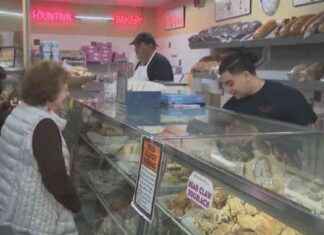MOSCOW aEUR
Russian authorities renamed the street in front of the embassy “Donetsk People’s Republic Square”, after a separatist area that claimed to be independent from Ukraine.
The U.S., like most countries around the globe, refuses to recognise the Donetsk “republic”. It appears that the U.S. is refusing to use the new address.
In April, the idea of renaming the site came up when Sergei Sobyanin, Moscow Mayor, announced an online vote. This seemed to be a provocative move.
Donetsk People’s Republic Square was the clear winner, with 45% aEUR”, and accusations of vote-rigging aEUR”,
Russian officials were thrilled when the new street signs were put up last month.
“I hope that the United States will not take too long to recognise the new republics,” Maria Zakharova, spokeswoman for the Russian Foreign Ministry, said during a June press conference where she welcomed the change. She said that Russians should be free to write to the Embassy at their new address aEUR” frequently.
Vladimir Putin, Russian President, officially recognized Donetsk’s independence from its neighbor, the self-proclaimed Luhansk People’s Republic. He then sent in Russian troops, which he claimed were part of a special military operation to “liberate” the wider Donbas region from Ukraine.
The U.S. announced a temporary solution this week following the address change. The Embassy’s website silently changed its listed contacts to coordinates: 55,75566AdegN, 37,58028AdegE. Bolshoy Deviatinsky Peulok No. 8.
A spokeswoman for the Embassy declined to comment on this change.
Denis Usmanov, a Russian taxi driver aEUR”, who has been taking passengers around Moscow for seven years, aEUR”, tells NPR that Russia and the U.S. have missed an essential point.
In an interview with NPR, Usmanov said that it doesn’t matter what people call it. “The most important thing is to get to where you need to be.”
Moscow’s shifting nature of politics and streets is not a new phenomenon.
1917’s Bolshevik Revolution saw the czarist-era addresses replaced by those honoring communist leadership.
1991 saw the end of the Soviet Union, which brought many historical names back to their homeland. This was what the city’s democratically elected officials considered one small but significant aspect of the ongoing changes.
Sergei Stankevich (who was the deputy mayor of the city in 1990s) said in an interview that “Symbolically, it was important to show the end and the beginning of one period.”
The U.S. has a history of changing its name when it comes to dealing with the Kremlin.
In honor of Andrei Sakharov Plaza, a U.S. official renamed a section of land close to the Soviet Embassy Andrei Sakharov Plaza during the height of Cold War.
Washington, D.C.’s City Council recently changed the name of the square directly across from the Russian Embassy to honor opposition leader Boris Nemtsov, aEUR”, who was a vocal opponent before Nemtsov’s assassination in 2015.
Stankevich, a former Deputy Mayor, noted that Moscow residents took some time to adjust to the new street name aEUR”, and it might be a while until Russians embrace Donetsk People’s Square.
Stankevich says, “It’s exactly what we call “trolling” today.” “Russian authorities are trying psychologically to make Americans uncomfortable.” It will probably change once again, I believe.”
Even if Russia wins the moment, the U.S. can still take comfort in the numbers.
Moscow’s mayor declared this week that the British Embassy will be moving to “Luhansk People’s Republic Square” following another online vote.








